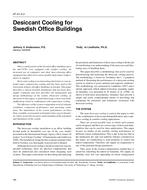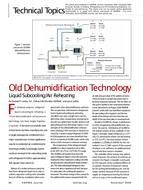Arid climates such as the one prevailing in the town of Eilath, Israel, are typified by dry and hot summers, a combination best suited for evaporative cooling. Consequently, many residences are equipped with desert coolers. Recently, however, some residents have resorted to air conditioners. Considers the thermodynamic aspects of selecting an economical domestic cooling system for an arid region. Discusses the advantages and drawbacks of using the systems and the consequences of possible improvements of each system. The thermodynamic perspective brings out the thermodynamic principle utilised by each system in cooling an apartment. The economic evaluation is based on life-cycle costing (LCC), covering purchase, installation, operation, and maintenance of the two systems. The economic model most conveniently accommodates small energy-consuming systems in buildings. The analysis allows for the strong interrelation between the economic and thermodynamic aspects, such as dependence of the operating cost on the surrounding climatic conditions as well as on the selected indoor thermal conditions (temperature and humidity).
KEYWORDS: thermodynamics, selecting, economics, domestic, cooling, deserts, Israel, unit air conditioners, evaporative cooling, relative humidity, unit air conditioners, performance, flats, service life, costs, calculating, heat flow, cooling load, electricity consumption, energy consumption, water consumption
Citation: ASHRAE Trans. 1994, Vol.100, Part 2, Paper number 3815, 329-338, 7 figs., 3 tabs., refs.
Product Details
- Published:
- 1994
- File Size:
- 1 file , 1.2 MB
- Product Code(s):
- D-17435


